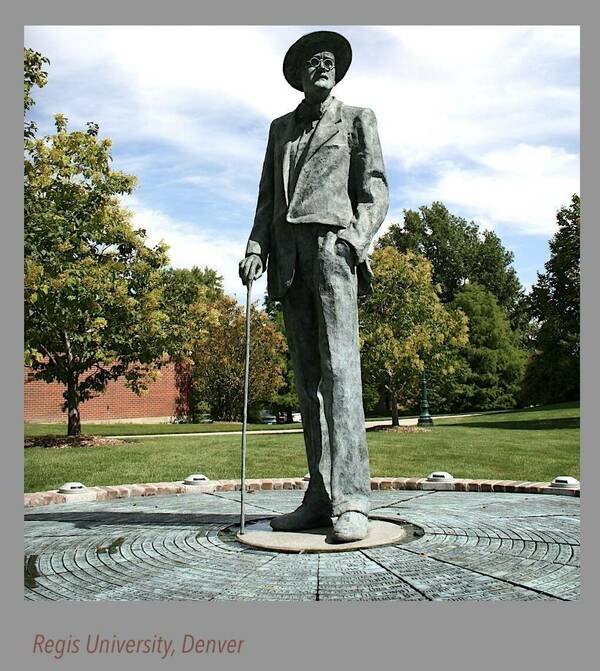Ripples of Ulysses

Rowan Gillespie
“Ripples of Ulysses,”
Bronze sculpture / maquette
The O’Brien Collection
Looking at the statue of Joyce by Rowan Gillespie makes me think of one of the earliest portraits of the artist. It was written around 1908 by Joyce’s friend and pupil, the Triestine writer Italo Svevo (whose Zeno’s Conscience turns a hundred this year). Svevo was to be a great sponsor of Joyce in Italy in the twenties, but much before that, on Joyce’s request, he had written a short essay in English called “Mr Joyce described by his faithful pupil”. Just as Gillespie’s statue, this piece shows, I think, Joyce’s great humanity and candor, and magically captures many crucial traits and features of him. This is what Svevo wrote:
When I see him walking on the streets I always think that he is enjoying a leisure, a full leisure. Nobody is awaiting him and he does not want to reach an aim or to meet anybody. No! He walks in order to be left to himself. He does also not walk for health. He walks because he is not stopped by anything…. His step is really his and of nobody else… He wears glasses and really uses them without interruption from the early morning until late in the night when he wakes up… He is going through life hoping not to meet bad men. I wish him heartily not to meet them.
I think Svevo and Gillespie saw something similar in Joyce, something human and spiritual at the same time. They probably intuited that precious thing that made another Italian writer, Giovanni Comisso, say: “next to Joyce one feels just as good as when one is near the sea, when the sea is a desert, the waves are small and everything remains unforgettable”.
Enrico Terrinoni
Joyce in his own words:
"The supreme question about a work of art is out of how deep a life does it spring."
“Life is too short to read a bad book.”
“Every life is in many days, day after day. We walk through ourselves, meeting robbers, ghosts, giants, old men, young men, wives, widows, brothers-in-love, but always meeting ourselves.”
“Think you're escaping and run into yourself. Longest way round is the shortest way home.”
“Hold to the now, the here, through which all future plunges to the past.”
“We can't change the world, but we can change the subject”
“Good puzzle would be cross Dublin without passing a pub.”
“He laughed to free his mind from his minds bondage.”
Musical “Ripples” to accompany the Sculpture/Sundial
“The Middle” (Composed by Jenna Moynihan)
*Jenna Moynihan (fiddle) & Màiri Chaimbeul (harp)
https://www.youtube.com/watch?v=xk50Bjj6FDA
*Jenna and Máiri also appeared on Track 2 (The Eagle’s Whistle) of the exhibit CD, Who Do We Say We Are? Irish Art 1922-2022 -THE MUSIC (Snite Museum exhibit)
